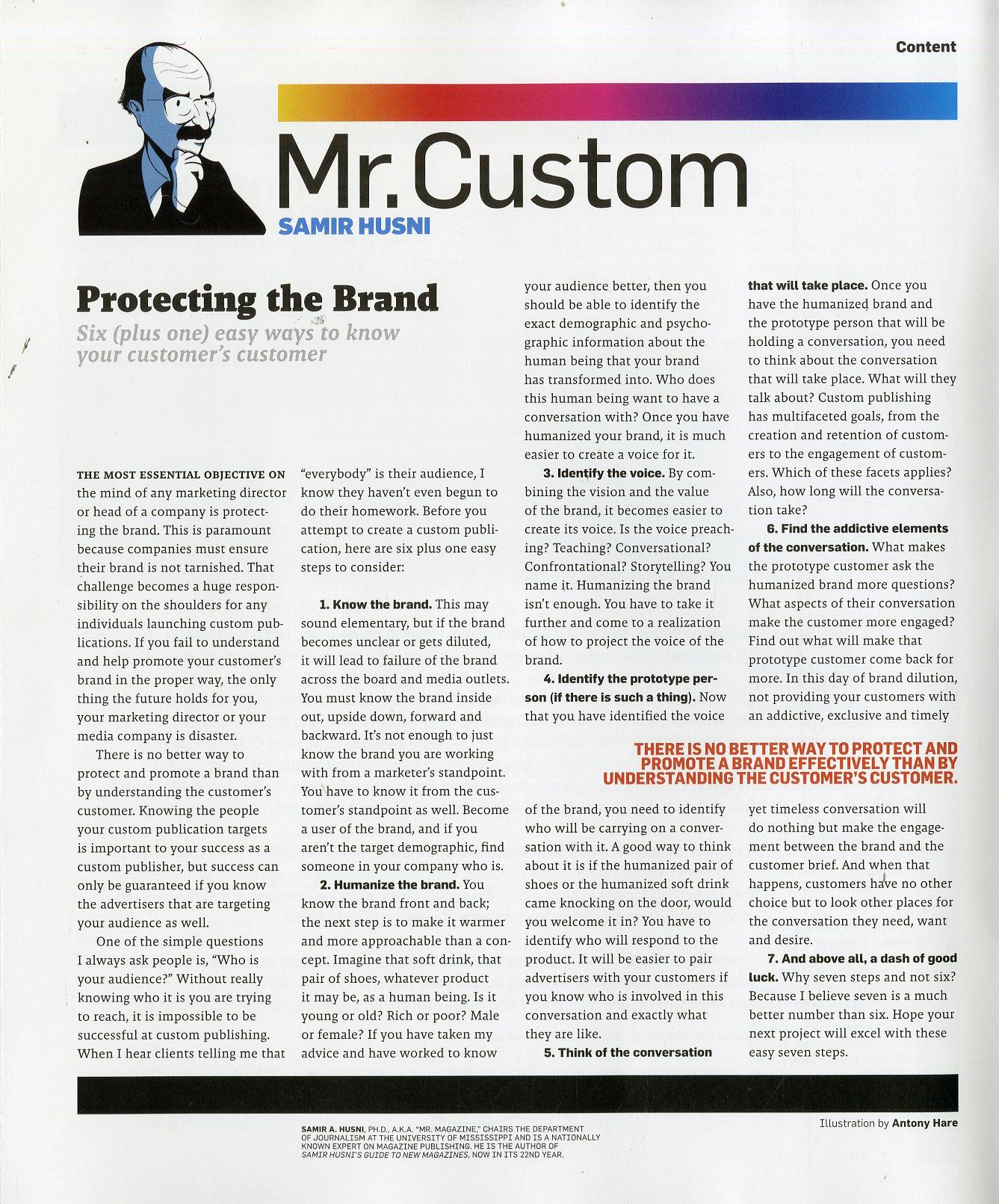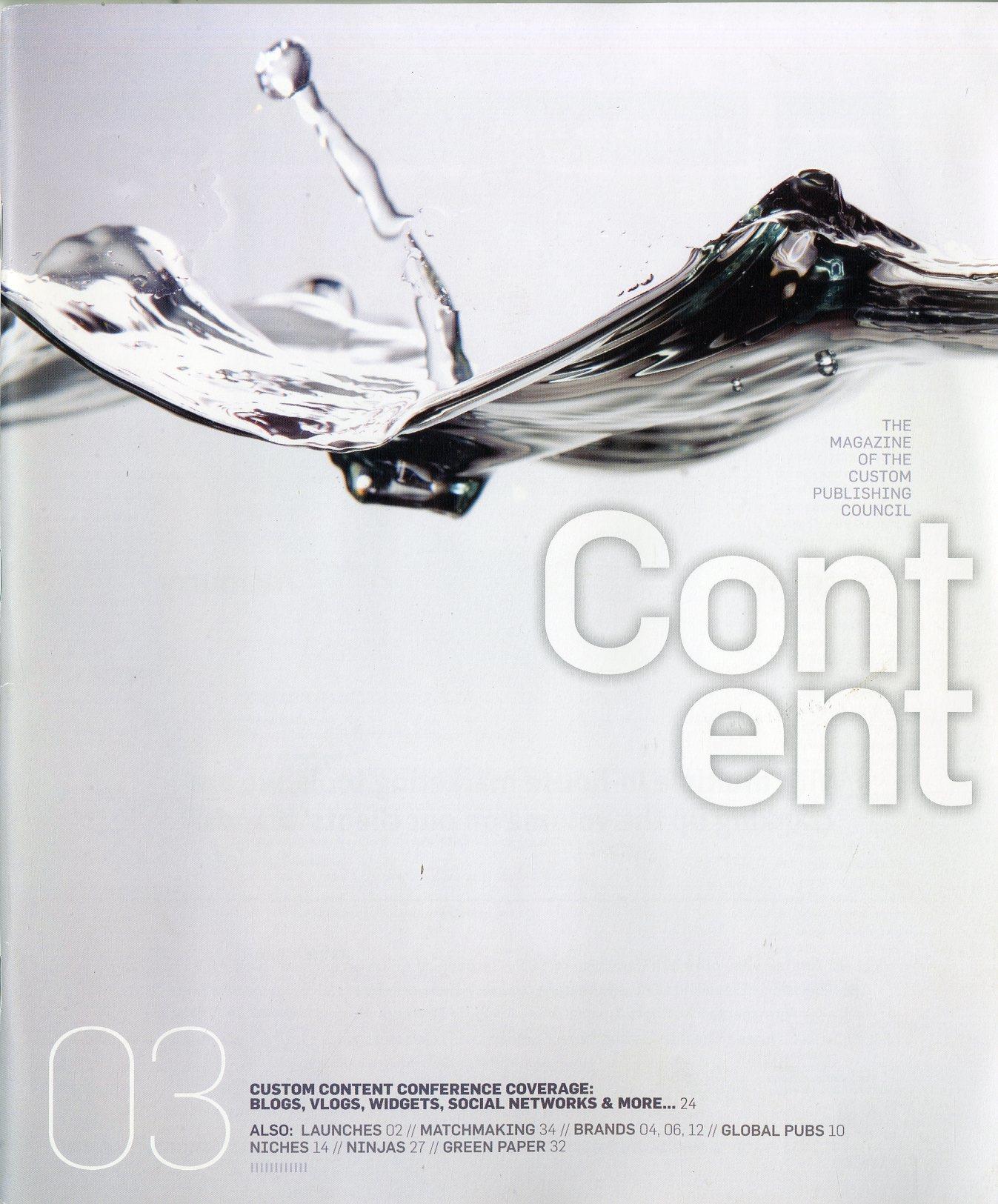Mr. Magazine™: Humanised content and your very human audience – it’s not bots out there reading your stuff
This article is authored by Samir Husni and was first published in his Mr. Magazine™ blog.
 |
Photo by Robert Jordan/Ole Miss Communications
I recently published an interview that I did with Drew Wintemberg, president of Time Inc. Retail. The focus of that conversation was on Special Interest Publications, or SIP’s as they are called in the world of publishing. There is nothing more customised than a singular topic magazine that targets a singular-topic-interested audience champing at the bit to learn more about that singular topic. That’s a lot of “singular topics” you might say, and I agree with you. But singular topics are what custom publishing is all about, even if you’re not a singular topic brand, knowing the singular topics that your audience is interested in is vital to the success of your custom publication.
Which leads me to the real crux of having success with any type of publishing, custom or otherwise, you have to know your customer’s customer, i.e. – the audience and the advertiser. That is the true mark of a professionally marketed and targeted publication. If you cannot humanise that magazine and give it a pointed and rigorous personality, one that can carry on a particular conversation with both the audience and the advertiser, then you’re simply tilting at windmills, because a one-dimensional idea that has not been “fleshed” out isn’t going to work. Not for you, not for your advertisers, and certainly not for your readers.
 |
Hence, the revisit of my article for “Content,” the magazine. In it I suggest 7 easy steps to know your customer’s customer. Well, actually, it’s six easy ways plus one, which is seven anyway you add it. And these are not only good for yesterday and today’s market, they’re even more crucial for tomorrow’s marketplace. They present the idea that protecting and promoting your brand properly is the future of your publication and your entire company. And there is no better way to do that than by knowing your customer’s customer. You have to understand each and every facet of your brand, from who’s buying it to who’s advertising in it.
So, come along with Mr. Magazine™ as we take a trip down memory lane and run into today and tomorrow there as well…
Protecting the Brand; Six (plus one) easy ways to know your customer’s customer
The most essential objective on the mind of any marketing director or head of a company is protecting the brand. This is paramount because companies must ensure their brand is not tarnished. That challenge becomes a huge responsibility on the shoulders for any individuals launching custom publications. If you fail to understand and help promote your customer’s brand in the proper way, the only thing the future holds for you, your marketing director or your media company is disaster.
There is no better way to protect and promote a brand than by understanding the customer’s customer. Knowing the people your custom publication targets is important to your success as a custom publisher, but success can only be guaranteed if you know the advertisers that are targeting your audience as well.
 |
One of the simple questions I always ask people is, “Who is your audience?” Without really knowing who it is you are trying to reach, it is impossible to be successful at custom publishing. When I hear clients telling me that “everybody” is their audience, I know they haven’t even begun to do their homework. Before you attempt to create a custom publication, here are six plus one easy steps to consider:
-
Know the brand.This may sound elementary, but if the brand becomes unclear or gets diluted, it will lead to failure of the brand across the board and media outlets. You must know the brand inside out, upside down, forward and backward. It’s not enough to just know the brand you are working with from a marketer’s standpoint. You have to know it from the customer’s standpoint as well. Become a user of the brand, and if you aren’t the target demographic, find someone in your company who is.
-
Humanise the brand.You know the brand front and back; the next step is to make it warmer and more approachable than a concept. Imagine that soft drink, that pair of shoes, whatever product it may be, as a human being. Is it young or old? Rich or poor? Male or female? If you have taken my advice and have worked to know your audience better, then you should be able to identify the exact demographic and psychographic information about the human being that your brand has transformed into. Who does this human being want to have a conversation with? Once you have humanised your brand, it is much easier to create a voice for it.
-
Identify the voice.By combining the vision and the value of the brand, it becomes easier to create its voice. Is the voice preaching? Teaching? Conversational? Confrontational? Storytelling? You name it. Humanising the brand isn’t enough. You have to take it further and come to a realisation of how to protect the voice of the brand.
-
Identify the prototype person (if there is such a thing).Now that you have identified the voice of the brand, you need to identify who will be carrying on a conversation with it. A good way to think about it is if the humanised pair of shoes or the humanised soft drink came knocking on the door, would you welcome it in? You have to identify who will respond to the product. It will be easier to pair advertisers with your customers if you know who is involved in this conversation and exactly what they are like.
-
Think of the conversation that will take place.Once you have the humanised brand and the prototype person that will be holding a conversation, you need to think about the conversation that will take place. What will they talk about? Custom publishing has multifaceted goals, from the creation and retention of customers to the engagement of customers. Which of these facets applies? Also, how long will the conversation take?
-
Find the addictive elements of the conversation.What makes the prototype customer ask the humanised brand more questions? What aspects of their conversation make the customer more engaged? Find out what will make that prototype customer come back for more. In this day of brand dilution, not providing your customers with an addictive, exclusive and timely yet timeless conversation will do nothing but make the engagement between the brand and the customer brief. And when that happens, customers have no other choice but to look other places for the conversation they need, want and desire.
-
And above all, a dash of good luck.Why seven steps and not six? Because I believe seven is a much better number than six. Hope your next project will excel with these easy seven steps.
More like this
The Mr. Magazine™ interview: Samir Husni speaks with Jeremy Leslie, owner and curator, Mag Culture
The Mr. Magazine™ interview: Jo Packham, a self-proclaimed woman of ideas









